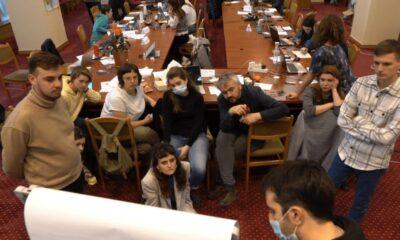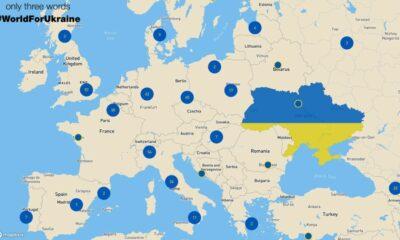Economy
Russian trade sanctions against Georgia, Moldova and Ukraine
Reading Time: 4 minutesSince March Russia has introduced wide-ranging sanctions against exports from these three CIS states. The wine industries of Georgia and Moldova have been conspicuously hit as the most important expor
By Michael Emerson, Gergana Noutcheva, Marius Vahl, George Dura, Centre for European Policy Studies (CEPS)
Artilce from the 15th Issue of the CEPS Neighbourhood Watch (http://www.ceps.be/files/NW/NWatch15.pdf)
Since March Russia has introduced wide-ranging sanctions against exports from these three CIS states. The wine industries of Georgia and Moldova have been conspicuously hit as the most important export industries of the two countries. Very severe damage at the macro-economic level are to be expected in the short-run. As a WTO candidate Russia might be expected to apply WTO rules in advance, which means in this context not using technical standards as a pretext for discriminatory trade protectionist measures, or not without offering explanations and evidence of the grounds for such restrictions. In addition Russia has forced the withdrawal from commercial circulation of the Borjomi spring water from Georgia, as well as Georgian and Moldovan cognacs. Russia has also been restricting imports of milk and meat from Ukraine on technical grounds. We give some details on Georgian and Moldovan wines since here the impacts will be greatest (1).
Georgian Wine. About 92% of Georgian wine production is exported, valued in 2005 at $81 million. Of this 75% went to Russia, 9% to Ukraine, 6% to Kazakhstan, 4% to the US, and 3% to the EU.
On March 27, 2006 the Russian Federation officially prohibited import of Georgian wines to the territory of Russia, for the reason that pesticide residues were allegedly found in the composition of Georgian wines thus endangering health and life of Russian citizens.
According to the Paragraph 8 of Article 5 of the WTO Agreement on the Application of Sanitary and Phytosanitary Measures, “When a Member has reason to believe that a specific sanitary or phytosanitary measure introduced or maintained by another Member is constraining, or has the potential to constrain, its exports and the measure is not based on the relevant international standards, guidelines or recommendations, or such standards, guidelines or recommendations do not exist, an explanation of the reasons for such sanitary or phytosanitary measure may be requested”.
The Georgian side has requested from the Russian Federation all the official documentation that served as the ground for their decision. The samples of wines, lab testing of which have preconditioned this decision have been also requested. However, no response from Russia has been received so far.
Taking into account the status of Russia as a candidate for WTO accession, the ban of Georgian wine contradicts the provisions of WTO Agreement, namely “no Member should be prevented from adopting or enforcing measures necessary to protect human, animal or plant life or health, subject to the requirement that these measures are not applied in a manner which would constitute a means of arbitrary or unjustifiable discrimination between Members where the same conditions prevail or a disguised restriction on international trade”.
Since 2003 Georgian wine can be imported into the EU with Georgian certificates of origin. The EU knows which laboratories are certified to issue certificates of origin. The EU is thus open to Georgia without quantitative restrictions, and without as of today non-tariff barriers such as phyto-sanitary standards. The problems alleged by Russia have not been noticed in the EU, which is hardly negligent on such matters. Georgia’s limited penetration into the EU market reflects issues of product quality and marketing networks.
Moldovan wine. Winemaking is one of the most important industries in Moldova, generating 25% of GDP in 2005. About 95% of wine produced in Moldova was exported in 2005, valued at $313 million. On average, wine exports are growing by 13-15% annually. Moldova is a top ten world wine exporter.
The main export market for Moldovan wine is the CIS, with over the last four years, 97% of Moldovan wines sales, with Russia accounting for 85% of the total. There is a free trade agreement with Russia since the early 1990s. Products standards applied are GOST (former Soviet Union) standards. Moreover, on the basis of bilateral agreements signed between Moldova and CIS countries, the certificates of conformity are mutually recognized.
The Russian ban on Moldovan wine imports has at least a three-fold impact. About 360 Moldovan wine making enterprises have been hard hit. In addition a number of industries announced losses, for example, carton/packs enterprises (boxes, labels, corks), and glass bottle enterprises. The Government cannot further count on a forecasted 10% industrial growth for 2006. The Moldovan Ministry of Finance is concerned that about $46 million of planned budget revenues will be lost. The trade deficit will further widen to an estimated $1.5 billion.
On Moldova-Russia relations, one of the lessons repeatedly learned by Moldovan businessmen is that Russia not a reliable trade partner. Russian business is affected at least in two ways. Russian importers and retailers stand to lose up to $700 million following the removal of Georgian and Moldovan wines from the shelves. Russian investors in Moldovan winemaking industry will not collect the expected dividends at the end of the year.
There are no non-tariff barriers impeding Moldovan wine exports to the EU market (2). However, quality and marketing strategies so far limit the competitiveness of Moldovan wines on the EU market. The largest Moldovan wineries, with the participation of foreign investors, have begun limited exports into the European market, increasing thus exports by 44% in 2004 compared to 2000. Quality and reliability of supply aside, deeper penetration into the EU market can only be realistically achieved with a significant marketing effort to introduce Moldovan wines as low cost alternatives to wines from Bulgaria and Romania.
The Russian ban has revived business links between producers from Moldova and Romania. As a result, a first common Romanian-Moldovan wine fair, which took place in Bucharest at the beginning of April this year, aimed at building partnerships in winning EU markets. To “EU through Romania” guides another initiative launched at the end of April, when a first Moldovan wine caravan will travel from city to city in Romania in a marketing effort organized by over 20 Moldovan wine producers. Some top Moldovan wine producers-exporters are investing in wineries in Romania and Bulgaria, where they benefit from EU funds to up-grade technologies and know-how.
—————
(1) Information supplied by Eka Avaliani in Tbilisi and Oxana Gutu in Chisinau.
(2) Moldovan wine and other alcoholic beverages fall outside the GSP scheme of tariff exemption The EU import of wines from third countries falls under the incidence of Title VII of the EU Council Regulation 1493/1999 of 17 May 1999. The EU customs tariffs which vary from 10% to 33%, depending on the nature of the product with some ad valorem charges depending on the product.
Economy
Moldova will receive a disbursement of 36 million euros as part of the the Economic Recovery Plan
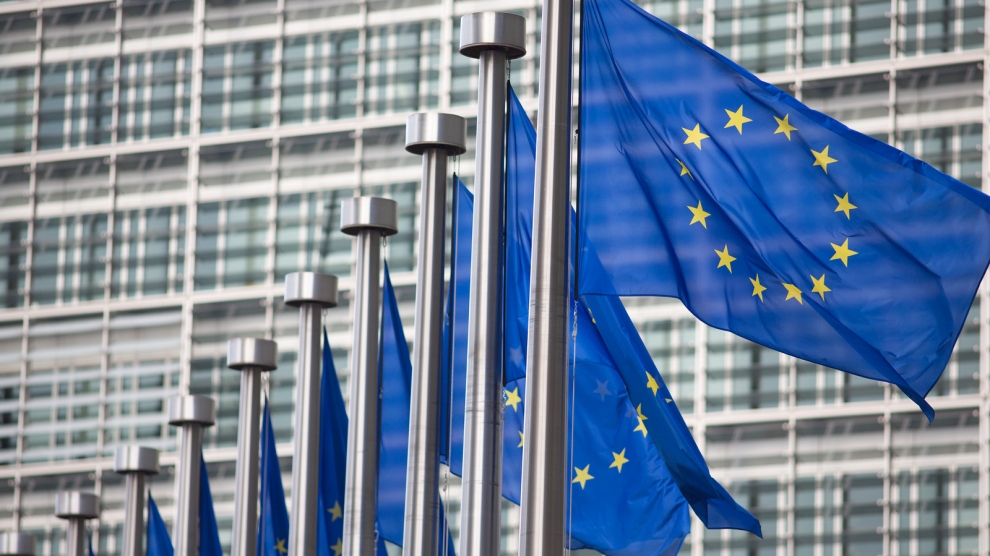
This week, the European Commission approved the disbursement of 36 million euros in grant money for the Republic of Moldova. The announcement was made by Deputy Director-General for Neighbourhood Policy and Enlargement Negotiations at the European Commission, Katarina Mathernova, who paid an official visit to the Republic of Moldova between September 13-15, together with Managing Director for Russia, Eastern Partnership, Central Asia, Regional cooperation and OSCE, at the European External Action Service, Michael Siebert.
The EU officials had meetings with President Maia Sandu, Minister of Foreign Affairs and European Integration, Nicu Popescu, Speaker of Parliament, Igor Grosu, Prime Minister of the country, Natalia Gavrilita, as well as key representatives of Government, international financial institutions and the civil society, according to a press release issued by the Delegation of the European Union to the Republic of Moldova.
Beside such topics as the EU-Moldova relations and prospects, the priorities of the reform agenda of the new Moldovan Government, preparations for the Eastern Partnership Summit at the end of the year and the Transnistrian conflict settlement, the officials also discussed the EU assistance in support of reforms and the Economic Recovery Plan for Moldova, which was announced in June with a total EU support of 600 million euros over the next 3 years.
“The first measures under the Economic Recovery Plan will shortly materialize, with the expected disbursement of 36 million euros in grant money under budget support programmes to support the authorities’ efforts to fight against the consequences of the pandemic. Moldova can count on EU’s assistance on its path to reforms and to recovery, bringing tangible results to citizens,” Katarina Mathernova stated.
The plan is based on assistance provided by the European Union through various bilateral and regional instruments, aiming to mobilize the funds in the form of grants, loans, guarantees and macro-financial assistance.
“The Economic Recovery Plan for the Republic of Moldova involves much more, not just this financial support provided immediately. It must help digital transformation, strengthen infrastructure, energy efficiency, education and support small and medium-sized enterprises,” the EU official also said.
As Prime Minister Natalia Gavrilita informed, “The Economic Recovery Plan and the 5 flagship initiatives for Moldova in the Eastern Partnership will directly contribute to the reform and consolidation of institutions, stimulate long-term socio-economic development, bring direct benefits to citizens, and unleash new economic opportunities through promoting the green agenda and digitization. Small and medium-sized enterprises (SMEs) have been hit hard by the crisis. Promoting and diversifying access to finance and reducing collateral requirements will be essential in supporting economic operators. We are grateful to the EU partners who will launch two programs to support 50 000 independent Moldovan SMEs to adapt to the new conditions.”
President of the Republic of Moldova, Maia Sandu, welcomed the decision of the European Union to disburse about 745 million lei in grant money, as the official page of the President’s Office announced. “EU support comes after a long period of freezing of European assistance, caused by former governments. We managed to relaunch the political dialogue with the European Union and resume financial assistance. The Republic of Moldova is gradually regaining the trust of its strategic partners. This European support is also a signal of encouragement for the new Government team in its commitment to clean up the institutions, fight corruption and launch development programs in the country,” said Maia Sandu.
Photo: unknown
Economy
Romania and Moldova signed a partnership memorandum pledging to cooperate in promoting their wines
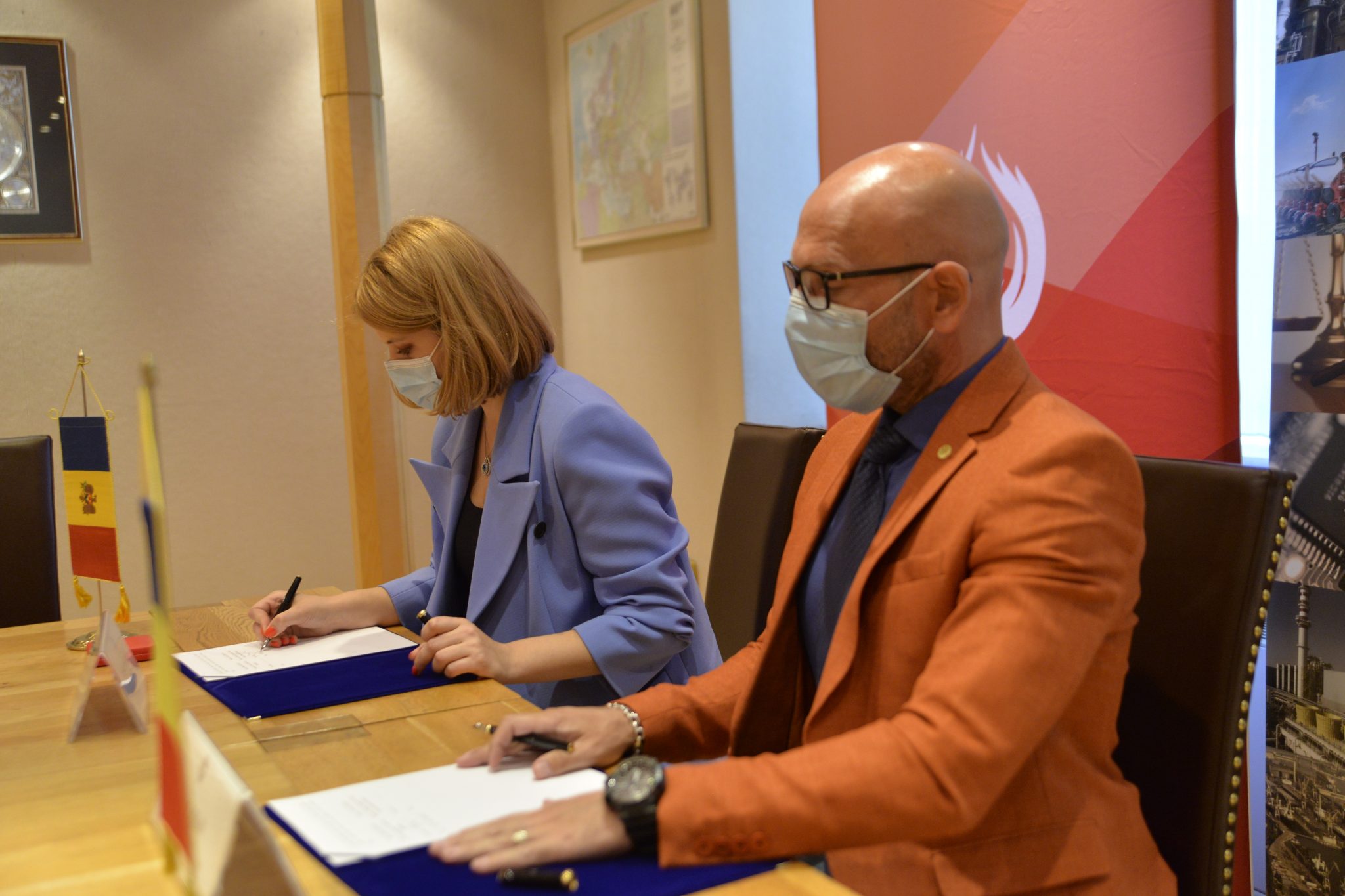
The Chamber of Commerce and Industry of Romania (CCIR) and the National Office for Vine and Wine (NOVW) of the Republic of Moldova signed, last week, a memorandum of cooperation on organizing joint promotional activities in the markets of common interest, as the CCIR announced.
China, Japan or the USA are just some of the markets targeted by the Romanian and Moldovan institutions. The memorandum also involves advertising activities for wines from common indigenous varieties, promoting the oeno-tourist region, developing a tourist route in the two states, exchange of experience, study visits, and mutual support in identifying new export opportunities. “We are very confident that this collaboration between our organizations will lead to sustainable economic growth and a higher degree of well-being among Moldovans and Romanians,” claimed Deputy Secretary-General of CCIR, Bogdan Visan.
On the other hand, Director of the NOVW, Cristina Frolov, declared that no open competition with Romania is aimed at the governmental level of the Republic of Moldova. “This request for collaboration is a consequence of the partnership principle. Romania imports 10-12% of the wine it consumes, and we want to take more from this import quota. Every year, the Romanian market grows by approximately 2.8%, as it happened in 2020, and we are interested in taking a maximum share of this percentage of imported wines without entering into direct competition with the Romanian producer,” the Moldovan official said. She also mentioned that Moldova aims at increasing the market share of wine production by at least 50% compared to 2020, and the number of producers present on the Romanian market – by at least 40%.
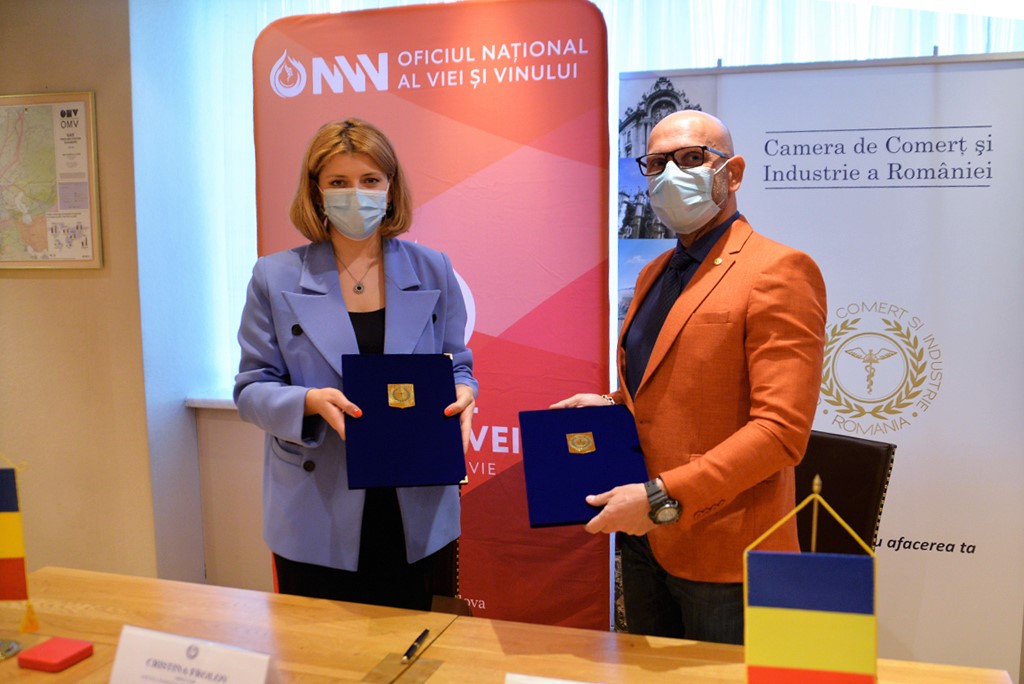
Source: ccir.ro
**
According to the data of the Romanian National Trade Register Office, the total value of Romania-Moldova trade was 1.7 billion euros at the end of last year and over 805 million euros at the end of May 2021. In July 2021, there were 6 522 companies from the Republic of Moldova in Romania, with a total capital value of 45.9 million euros.
The data of Moldova’s National Office of Vine and Wine showed that, in the first 7 months of 2021, the total quantity of bottled wine was about 27 million litres (registering an increase of 10% as compared to the same period last year), with a value of more than one billion lei, which is 32% more than the same period last year. Moldovan wines were awarded 956 medals at 32 international competitions in 2020.
Photo: ccir.ro
Economy
Moldova’s hope to be a top walnut exporter and its main difficulties
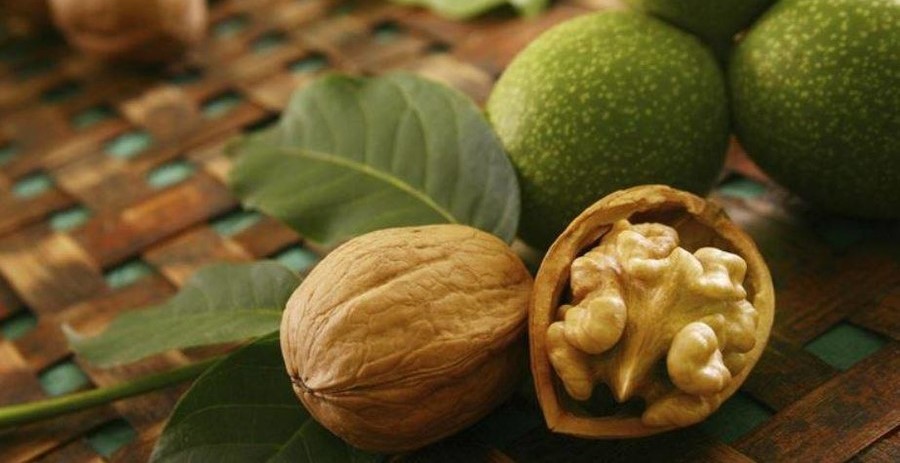
The Republic of Moldova has perfect weather conditions for growing walnut trees, that creating a great potential of walnut production and trade, especially on international markets, where the demand is way higher than the product’s supply. National and international experts believe that the country’s walnut production industry is on the verge of important transformations, which could lead to increased yields, quality and competitiveness worldwide.
According to authorities, Moldova exports 34-35 thousand tons of walnuts in shell, which is about 7% of the total export of fruit and 5% of the total export of horticultural products. The export value is assessed as being $120 million, that being 57-60% of the total fruit export value and about 50% of horticultural export value. Most of walnut crops are exported to the EU countries, such as France, Germany, the Netherlands, Romania and Austria. The country’s exports were among the world’s top 10 when it comes to the highest dollar value of the product during 2020.
Viorel Gherciu, Minister of Agriculture and Food Industry, pointed out that the production in the domestic walnut industry has increased by 55% in the last five years, which ranks Moldova among the main producers in the world.
“The biggest opportunity for this industry is that we are in the geographical proximity of the largest walnut import area in the world, which is the European Union, with almost 40% of total imports in the world. We are on the EU border, with privileged relations, with an Association Agreement. We already enjoy a good relationship in working with European importers, they trust our processors. A very close collaboration has been created and this is, in fact, the guarantee for those who invest in the area,” claimed the president of the Walnut Producers Association, Oleg Tirsina.
The data provided by the National Bureau of Statistics show that there are 34.7 thousand hectares of walnut plantations in the country. 20.90 hectares are represented by orchards. 75% of planted orchards are formed of old varieties trees. 30-35% of the exported production comes from orchards, the rest comes from individual farmers and plantations along the roads. This means that the quality of walnut production is not at its maximum potential. Developing commercial plantations through orchards modernization and extension of walnut varieties would provide double yield and better quality, experts say.
Governmental support in the form of subsidizing solutions, foreign investments and credit options are indispensable for the industry development. One of the financing options is the credit line of the European Investment Bank Project. Since 2016, 15 producers and processors of nuts, almonds and hazelnuts have benefited from these loans with the total amount of investments worth 8.7 million euros. A further extension of the project would provide another 60 million euros for the modernization of the horticultural sector in general and for harvesting organic walnuts in particular.
Photo: heymoldova.com


